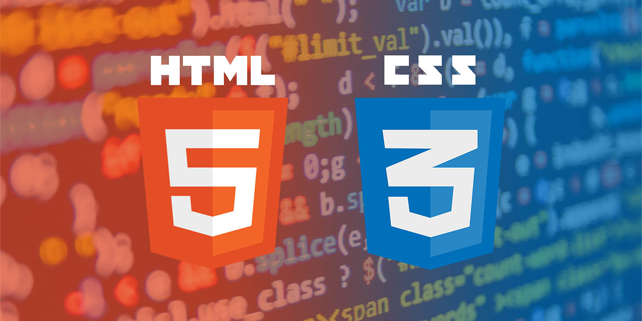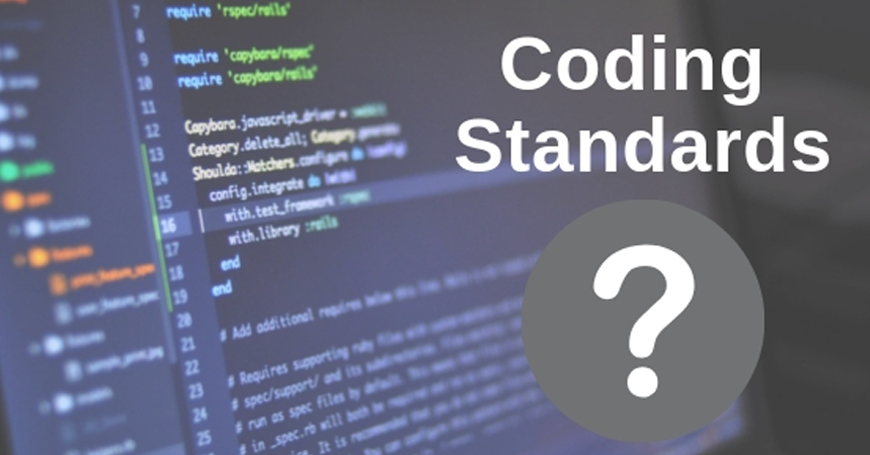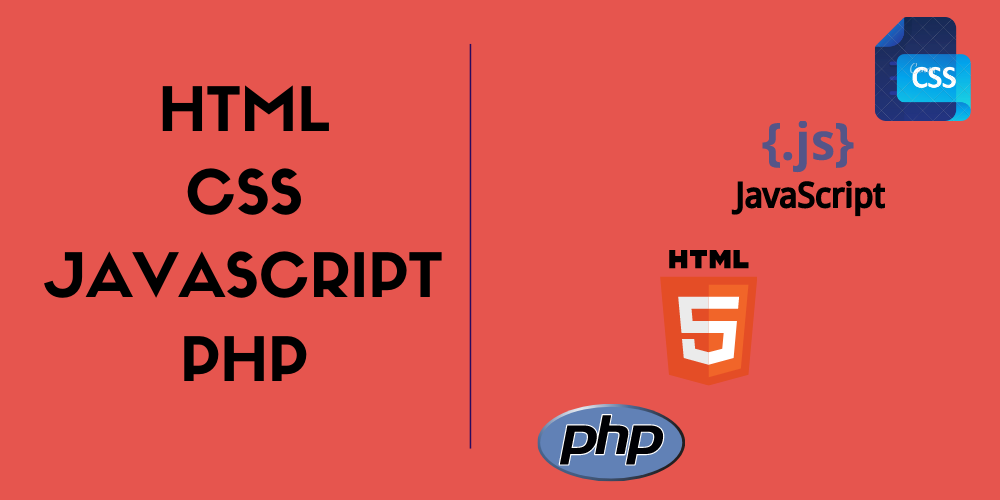CodeIgniter interview questions and answers
Explain what is CodeIgniter
CodeIgniter is a powerful MVC-based PHP framework with a very small footprint, built for developers who need a simple and elegant toolkit to create full-featured web applications.
What is the current version of CodeIgniter?
As on Feb 3, 2018, CodeIgniter 3.1.7 is the latest version of the framework. You can download it from CodeIgniter's official
website.
How to check the version of the CodeIgniter framework?
In system/core/CodeIgniter.php, check CI_VERSION constant value define(‘CI_VERSION’, ‘3.0.6’);
List Databases supported by CodeIgniter frameworks?
The following Databases supported are supported by CodeIgniter Frameworks
• MySQL (5.1+) via the MySQL (deprecated), MySQL, and PDO drivers
• Oracle via the oci8 and PDO drivers
• PostgreSQL via the Postgre and PDO drivers
• MS SQL via the MsSQL, Sqlsrv (version 2005 and above only), and PDO drivers
• SQLite via the SQLite (version 2), sqlite3 (version 3), and PDO drivers
• CUBRID via the Cubridand PDO drivers
• Interbase/Firebird via the iBase and PDO drivers
• ODBC via the ODBC and PDO drivers (you should know that ODBC is an abstraction layer)
List some features provided by CodeIgniter.
• Framework with a small footprint
• Simple solutions over complexity
• Clear documentation
• Exceptional performance
• Strong Security
• Nearly zero configuration
Explain helpers in CodeIgniter and how to load the helper file.
As the name suggests, helpers help you with tasks. Each helper file is simply a collection of functions in a particular
category. They are simple, procedural functions. Each helper function performs one specific task, with no dependence on
other functions.
CodeIgniter does not load Helper Files by default, so the first step in using a Helper is to load it. Once loaded, it becomes
globally available in your controller and views.
Helpers are typically stored in your system/helpers, or application/helpers directory
Loading a helper file is quite simple using the following method:
$this->load->helper('name');
Where name is the file name of the helper, without the .php file extension or the “helper” part.
Explain Routing in CodeIgniter.
In Software engineering routing is the process of taking a URI endpoint (that part of the URI which comes after the base
URL) and decomposes it into parameters to determine which module, controller, and action of that controller should
receive the request. In CodeIgniter typically there is a one-to-one relationship between a URL string and its
corresponding controller class/method. The segments in a URI normally follow this
pattern :example.com/class/function/id/.In CodeIgniter, call routing rules are defined in your
application/config/routes.php file.
What are Hooks in CodeIgniter? List them?
CodeIgniter’s Hooks feature provides a way to modify the inner workings or functionality of the framework without
hacking the core files.
The following is a list of available hook points.
• pre_system Called very early during system execution.
• pre_controller Called immediately before any of your controllers are called.
• post_controller_constructor Called immediately after your controller is instantiated, but before any method
calls happen.
• post_controller Called immediately after your controller is fully executed.
• display_override Overrides the _display() method.
• cache_override Enables you to call your method instead of the _display_cache() method in the Output
Library. This permits you to use your cache display mechanism.
• post_system Called after the final rendered page is sent to the browser, at the end of system execution after the
finalized data is sent to the browser.
List Common Function in CodeIgniter?
CodeIgniter uses a few functions for its operation that are globally defined and are available to you at any point. These
do not require loading any libraries or helpers.
• is_php($version)
• is_really_writable($file)
• config_item($key)
• set_status_header($code[, $text = ”])
• remove_invisible_characters($str[, $url_encoded = TRUE])
• html_escape($var)
• get_mimes()
• is_https()
• is_cli()
How do you default timezone in CodeIgniter?
To set the default timezone in CodeIgniter open the application/config.php file and add the below code in it.
date_default_timezone_set('your timezone');
How do add/link/images/CSS/Javascript from a view in CI?
In CodeIgniter, you can link images/CSS/JavaScript by using the absolute path to your resources.
Something like below
// References your $config['base_url']; ?>)
What is inhabitor CodeIgniter?
An inhibitor is an error-handling class in CodeIgniter. It uses PHP‘s native functions like
register_shutdown_function, set_exception_handler, and set_error_handler to handle parse errors, exceptions, and fatal
errors.
How can you remove index.php from Url in CodeIgniter?
Follow the below steps to index.php from the URL in CodeIgniter
• Step 1: Open config.php and replaces
$config['index_page'] = "index.php" to
$config['index_page'] = "" and $config['uri_protocol'] ="AUTO" to
$config['uri_protocol'] = "REQUEST_URI"
Step 2: Change your .htaccess file to RewriteEngine on RewriteCond $1 !^(index\.php|[Javascript / CSS /
Image root Folder name(s)]|robots\.txt)RewriteRule ^(.*)$ /index.php/$1 [L]
How will you add or load the model in CodeIgniter?
In CodeIgniter, models will typically be loaded and called from within your controller methods. To load a model you will
use the following method:
$this->load->model('model_name');
If your model is located in a sub-directory, include the relative path from your model’s directory. For example, if you
have a model located at application/models/blog/Posts.php you’ll load it using:
$this->load->model('blog/Posts');
Once your Model is loaded, you will access its methods using an object with the same name as your controller: For example
class Blog_controller extends CI_Controller {
public function blog() {
$this->load->model('blog');
$data['query'] = $this->blog->get_last_ten_entries();
$this->load->view('blog', $data);
}
}
What are Sessions in Codeigniter? How to read, write or remove session in
Codeigniter?
Sessions in CodeIgniter
In CodeIgniter Session class allows you to maintain a user’s “state” and track their activity while they are browsing your
website.
To use the session, you need to load the Session class in your controller.
$this->load->library(‘session’); method is used to sessions in CodeIgniter
$this->load->library('session');
Once loaded, the Sessions library object will be available using:
$this->session
Reading session data in CodeIgniter
Use $this->session->userdata(); method of session class to read session data in CodeIgniter.
Usage
$this->session->userdata('your_key');
You can also read session data by using the magic getter of CodeIgniter Session Class Usage
$this->session->item
Where an item is the name of the key you want to retrieve.
Creating a session in CodeIgniter
Session’s Class set_userdata() method is used to create a session in CodeIgniter. This method takes an associative array
containing the data that you want to add to the session.
Example
$newdata = array( 'username' => 'johndoe', 'email' => 'johndoe@some-site.com', 'logged_in' =>
TRUE);$this->session->set_userdata($newdata);
If you want to add user data one value at a time, set_userdata() also supports this syntax:
$this->session->set_userdata('some_name', 'some_value');
Removing Session Data
Session’s Class unset_userdata() method is used to remove session data in CodeIgniter. Below are examples of usages of
same.
Unset particular key
$this->session->unset_userdata('some_key');
Unset an array of item keys
$array_items = array('username', 'email');
$this->session->unset_userdata($array_items);
Read More at https://www.codeigniter.com/userguide3/libraries/sessions.html Also, Read
WordPress Interview Questions -2018
How to get the last inserted id in Codeigniter?
CodeIgniter DB Class insert_id() method is used to get the last insert id.
Usage:
function add_post($post_data){
$this->db->insert('posts', $post_data);
$insert_id = $this->db->insert_id();
return $insert_id;
}
How you will use or load Codeigniter libraries?
$this->load->library(‘library_name’); method is used to load a library in CodeIgniter.
Usage:
//Loading Cart library
$this->load->library('cart');
Using Cart Library methods
$data = array( 'id' => 'sku_9788C', 'qty' => 1, 'price' => 35.95, 'name' => 'T-Shirt', 'options'
=> array('Size' => 'L', 'Color' => 'Red'));$this->cart->insert($data);
What is the CLI? Why do we use CLI in Codeigniter?
CLI is a text-based command-line interface for interacting with computers via a set of commands.
In Codeigniter, we can use CLI for
• Run your cronjobs without needing to use wget or curl
• Make your cronjobs inaccessible from being loaded in the URL by checking the return value of is_cli().
• Make interactive “tasks” that can do things like set permissions, prune cache folders, run backups, etc.
• Helps to integrate Codeigniter with other applications in other languages. For example, a random C++ script
could call one command and run code in your models!
How to do 301 redirects in Codeigniter
We can use redirect helper to do 301 redirects in Codeigniter.
Syntax :
redirect($uri = '', $method = 'auto', $code = NULL) Parameter:
$uri (string) – URI string
$method (string) – Redirect method (‘auto’, ‘location’ or ‘refresh’)
$code (string) – HTTP Response code (usually 302 or 303)
Return type: void Sample Usage:-
redirect('/posts/13', 'New location', 301);
How to check a field or column exists in a table or not in Codeigniter?
Code for Checking a field or column exists or not in a Codeigniter table.
if ($this->db->field_exists('field_name', 'table_name')){
// some code...
}
What is_cli() method do in Codeigniter?
In Codeigniter is_cli() method is used to check whether requests are from the command line or not. Returns TRUE if
the application is run through the command line and FALSE if not.
Explain CodeIgniter's application flow chart.
The below images give you an understanding of how data flows throughout the system in Codeigniter.
1. The index.php serves as the front controller, initializing the base resources needed
to run CodeIgniter.
2. The Router examines the HTTP request to determine what should be done with it.
3. If a cache file exists, it is sent directly to the browser, bypassing the normal system
execution.
4. Security. Before the application controller is loaded, the HTTP request and any user-submitted data are filtered for security.
5. The Controller loads the model, core libraries, helpers, and any other resources
needed to process the specific request.
6. The finalized View is rendered and then sent to the web browser to be seen. If caching
is enabled, the view is cached first so that on subsequent requests it can be served.
Source: https://www.codeigniter.com/user_guide/overview/appflow.html
How to set or get config variables in Codeigniter?
In Codeigniter, by default, all config variables are located in the “application/config/config.php” file. Below is the
way to set or get a config variable in Codeigniter
// Setting a config variable dynamically
$this->config->set_item('variable_name', value);
// Getting value of config variable in Codeigniter.
$this->config->item('variable_name');
How to delete a record in Codeigniter?
In Codeigniter, the delete function is used to delete one or more row data from a table.
//DELETE FROM table WHERE id = $id $conditions =['id' => $id]
$this->db->delete('table_name', $conditions);
// Deleting records from more than tableless in one go
$id=1;
$tables = array('table1', 'table2', 'table3');
$this->db->where('id', $id);
$this->db->delete($tables);
How to implement validations in Codeigniter?
What is the default URL pattern used in the Codeigniter framework?
In CodeIgniter, URLs are designed to be search-engine and human-friendly. CodeIgniter uses a segment-based approach
rather than using a “query string” based approach.
abc.com/user/edit/ramesh
The default URL pattern in CodeIgniter consists of 4 main components. They are :
7. A server name (abc.com)
8. A Controller (user)
9. An Action or method (edit)
10. An optional action parameter (Ramesh)
How to get random records in MySQL using CodeIgniter?
order_by function is used to order the records from a table in CodeIgniter.
// Getting random rows from the database in CodeIgniter
$this->db->select('*');
$this->db->from('table_name');
$this->db->order_by("column_name", "random");
$result = $this->db->get()>result();
Why CodeIgniter is called a loosely based MVC framework?
Codeigniter is called loosely based because in Codeigniter controller is necessary whereas the model and view are
optional. That means you can build a website without a model using a model.
What is an ORM, List orms for CodeIgniter?
Object-relational mapping (ORM) is a programming technique for converting data between incompatible type systems
using object-oriented programming languages. Below is the list of ORMs supported by the CodeIgniter Framework
• DataMapper
• Doctrine
• Gas ORM
Explain URL Helper. Can you list some commonly used URL helpers in Codeigniter?
URL helper Returns your site URL, as specified in your config file. The index.php file (or whatever you have set as your
site index_page in your config file) will be added to the URL, as will any URI segments you pass to the function, plus
the url_suffix as set in your config file.
For more detail visit the below link
https://codeigniter-id.github.io/user-guide/helpers/url_helper.html
List the resources that can be autoloaded in Codeigniter.
The following items can be loaded automatically:
• Classes found in the libraries/ directory
• Helper files found in the helpers/ directory
• Custom config files found in the config/ directory
• Language files found in the system/language/ directory
• Models found in the models/ folder
To autoload resources, open the application/config/autoload.php file and add the item you want loading to the autoload
array. You’ll find instructions in that file corresponding to each type of item.
In which file routes are defined in Codeigniter?
All Routing rules in Codeigniter are defined in your application/config/routes.php file.
In which directory logs are saved in Codeigniter? How to enable error logging in Codeigniter?
By default, all logs in Codeigniter are stored in the logs/ directory. To enable error logging you must set the “threshold” for
logging in application/config/config.php. Also, your logs/ must be writable. $config['log_threshold'] = 1;
How many types of messages can you log in to Codeigniter?
There are three message types in Codeigniter. They are :
• Error Messages. These are actual errors, such as PHP errors or user errors.
• Debug Messages. These are messages that assist in debugging. For example, if a class has been initialized, you
could log this as debugging info.
• Informational Messages. These are the lowest priority messages, simply giving information regarding some
process.



_(1).jpg)
_(2).jpg)
.jpg)

_(1).jpg)

.jpg)
.jpg)
.jpg)
.jpg)
.jpg)


.jpg)
_(1).jpg)
.jpg)
.jpg)


_(1).png)

.png)

1.png)































4.png)









0 Replies to “PHP Framework CodeIgniter Guide For Beginners”
Leave a Reply
Your email address will not be published.